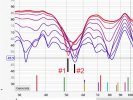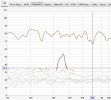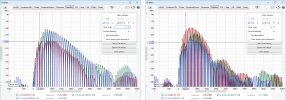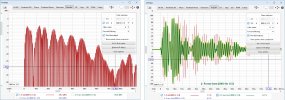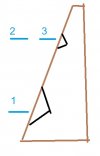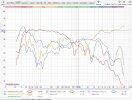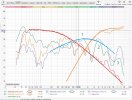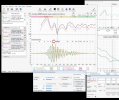I just drew up your room in CAD and a 50Hz reflection node seems to be bang on with both the LP and the speakers passive radiator. That's a double null whammy lol.

The "node" is the null point of a reflection. All frequencies have an anti-node (boost) at the reflecting surface, and a node (null) at a distance of 1/4 wavelength from the surface. Room modes are when these stack together evenly. And there is often a prominent dip from a node caused by the back wall.

The "double whammy" is because you are both listening on a node whilst the passive radiators are playing on a node (when something plays on a node, it cancels itself, like shown in the Visualisation thread I linked at the start). If you can change one aspect, you should be able to improve the null a bit. If you move the speakers close to the walls, the walls might help "shade" the ceiling from the speaker.
If you get a sub, it won't play on to the same node, but you will still be sitting in the same node.
Edit: If you could upload the measurement mdat for 1 speaker at the main LP, I've got some ideas I would like to test.

The "node" is the null point of a reflection. All frequencies have an anti-node (boost) at the reflecting surface, and a node (null) at a distance of 1/4 wavelength from the surface. Room modes are when these stack together evenly. And there is often a prominent dip from a node caused by the back wall.

The "double whammy" is because you are both listening on a node whilst the passive radiators are playing on a node (when something plays on a node, it cancels itself, like shown in the Visualisation thread I linked at the start). If you can change one aspect, you should be able to improve the null a bit. If you move the speakers close to the walls, the walls might help "shade" the ceiling from the speaker.
If you get a sub, it won't play on to the same node, but you will still be sitting in the same node.
Edit: If you could upload the measurement mdat for 1 speaker at the main LP, I've got some ideas I would like to test.
Last edited:


